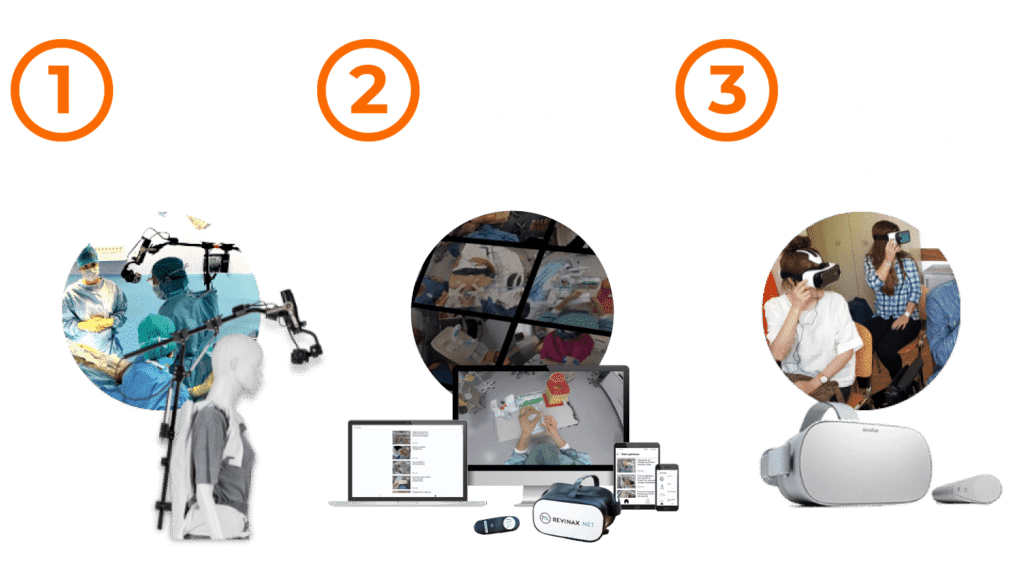Our scientific studies
Context and Challenges
Healthcare education is a fundamental global issue. Enabling a larger number of people to access surgical care, reducing errors, and decreasing the resulting expenses make surgery an international priority in the eyes of the WHO.
It is currently possible to find alternative methods to the traditional apprenticeship to ensure the training of medical and technical gestures. The main challenge encountered during surgical apprenticeship is the difference in perspective between the student and the primary operator.

What tools are available to address these challenges?
Thanks to virtual reality, it is now possible, through a simple headset, to take the place of the operator and see the surgical field from their perspective.
Edgar Dale argued that after fifteen days, we only retain 10% of what we read but 90% of what we experience, enhancing memorization. Experiencing something allows for better assimilation.
Simulation has a place in learning because it precisely provides an experiential method. Certain professionals, such as those in aviation, have long incorporated simulation into their training programs.
The first-person perspective.
Visualizing the operation from the first-person perspective eliminates obstacles and obstructions to clear visibility of the surgical field for the learner. It has been demonstrated, particularly through functional MRI, that accessing this viewpoint activates the mirror neuron network. The corresponding cortical brain areas responsible for the engaged limbs during the procedure are activated.
This simplifies and enhances the memorization process of a gesture.

Immersion
The power of virtual reality lies in the total immersion it allows in a controlled environment.
The user becomes an actor in the experience: “They are not external to the process but rather the very object of the visit experience; they are simultaneously an acting subject and an object of transformation” (Hetzel, 2002).
Through its immersive nature, virtual reality plunges the user into a state of intense concentration, boosting their ability to memorize what they see.
Video-realism
With video, the user does more than just watch; they experience sensations. The primary sensation is “the feeling of presence” as defined by Dalgarno and Lee: the user feels physically transported into another environment. This fosters emotional engagement. This engagement, the ability to feel the lived experience, promotes better learning.
Another important aspect of surgical technique videos, which holds educational value, is three-dimensional visualization. Understanding depth differences allows for a better appreciation of anatomical space and the procedures performed within it.

The Keyros Medica solution
We have developed a process to address these training needs by utilizing immersive virtual reality.
Firstly, we obtain a stereoscopic film from the primary operator’s viewpoint. To achieve this, we have developed a support system for two cameras (to record in 3D) that is worn by the surgeon during the procedure.
The videos from the two cameras are synchronized and assembled side by side (side-by-side) to obtain the actual stereoscopic film. This film is then edited and divided into chapters based on different stages of the procedure. Finally, it is uploaded to our dedicated platform.



